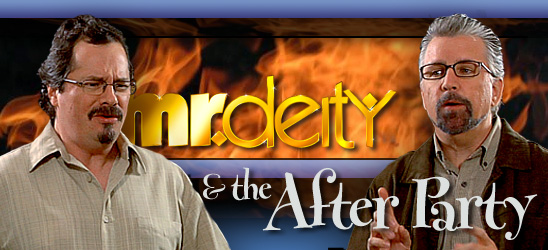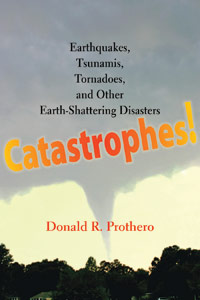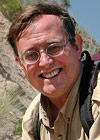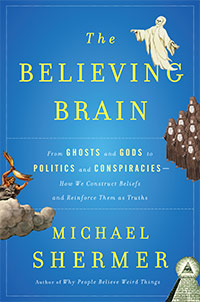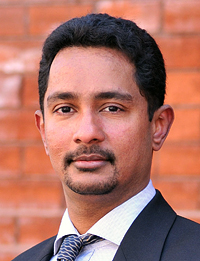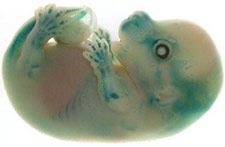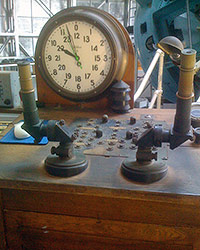In this week’s eSkeptic:
- the latest episode of Mr. Deity: Mr. Deity and the After Party
- feature article: Quacks & Quakes
- follow Michael Shermer: Center for Inquiry presents Shermer in DC
- our next lecture: The Search for Alien Planets (Dr. Ray Jayawardhana)
- MonsterTalk: Resurrecting the Extinct
- follow Daniel Loxton: Keynote Speaker at LogiCON 2011
- Mystery Photo: previous photo revealed, plus a new photo
The Latest Episode of Mr. Deity
WATCH THIS EPISODE | DONATE | NEWSLETTER | FACEBOOK | MrDeity.com
About this week’s feature article
Since the earthquake and subsequent tsunami that hit Japan on March 11, 2011, a storm of misinformation about earthquakes and natural disasters has followed. In this week’s eSkeptic, professor of geology and author of the new book Catastrophes: Earthquakes, Tsunamis, Tornadoes, and other Earth-Shattering Disasters, Dr. Donald R. Prothero shines a scientific light on some of this misinformation and discusses the difficult nature of earthquake prediction. Read Donald Prothero’s detailed bio below.
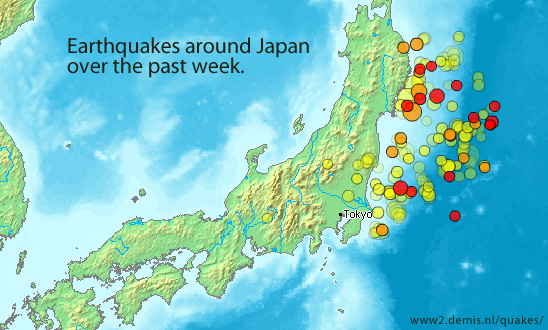
Quacks & Quakes
by Donald Prothero
The great Sendai earthquake and tsunami of March 11, 2011, generated not only huge coverage in all the media, but also brought all the crazies out of the woodwork (as any major earthquake or natural disaster does). I’ve discussed the geophysical and geological details in a separate post, but the storm of misinformation and myths flying around the media and internet was overwhelming. My email box was filled with questions about these events, because I’ve been doing publicity for my new book Catastrophes: Earthquakes, Tsunamis, Tornadoes, and other Earth-Shattering Disasters (Johns Hopkins University Press). There were not only the usual myths about earthquakes, but also an additional layer of apocalyptic speculation and “end of the world” prophecies, plus the crazies who believe the 2012 myth.
Among those that got their 15 minutes of fame during the post-quake media blitz was a well-known crank, Jim Berkland, who got a full interview promoting his ideas on Fox News on March 17 (but on no other network). First, the reporter put up a map of the “Ring of Fire” of volcanoes and earthquakes around the Pacific Rim, pointed at Chile, then New Zealand, then Japan, and implied that this circle of quakes might end in California. Apparently, he never consulted a geologist, who would have pointed out that each of those regions is an entirely different type of plate boundary and they have no tectonic plates in common. Then Fox gave Berkland a full five minutes to spout his ideas, with the same credulous reporter tossing him softball questions, and no rebuttal from any other geologist or seismologist. Berkland rambled on about animal behavior and fish die-offs in California (which have been explained by unusual water conditions), never mentioning that such die-offs are common and not statistically associated with earthquakes (nor is there any plausible mechanism that might link them). He blathered on about how animals sense unusual magnetic fields before the quake, an argument that has been thoroughly debunked. Berkland mentions several other quakes he claims to have “predicted,” with no fact-checking or examination of his overall record of “prediction.” He also demonstrated the classic persecution complex of all cranks and fringe scientists, dismissing real scientists and their “black boxes” when he uses methods with no rigor or peer review. He then used his airtime to boldly predict that a great California quake would happen on March 19, the perigee of the “supermoon,” with a prediction window running to March 26. Well, those dates have come and gone, and we don’t see Fox News interviewing him again to explain what went wrong.
If Fox had bothered to do minimal research about him, they would never have wasted the airtime and panicked people unnecessarily. First of all, Berkland is not a seismologist but a geologist with only a B.A. and some graduate training, who served in several different government positions before retiring in 1994. Berkland is touted as having predicted the Loma Prieta earthquake, something that he uses as his main publicity hook and was promoted on the Fox broadcast. However, there are questions about this prediction. That region had already been targeted a year earlier as a “seismic gap” or one of the most likely areas for the next big quake. According to the University of Washington Pacific Northwest Seismic Network site, “The segment of the San Andreas fault that broke in the 1989 M 7.1 Loma Prieta or “World Series” earthquake had been identified by the USGS as one of the more likely segments of the San Andreas to rupture. Magnitude 5+ earthquakes 2 and 15 months before the damaging earthquake were treated as possible foreshocks, and the USGS issued 5-day Public Advisories through the California Office of Emergency Services.” So it was no great shakes to follow this prediction and pick a date. Berkland just got lucky and happened to mention it to a reporter for a local paper in Gilroy, California, so it was actually recorded in the public record.
Once his complete record of quake prediction is examined more closely, its “success rate” falls apart. It’s a classic case of cherry-picking the favorable data, and also confirmation bias, used by fortune-tellers and faith healers and swindlers of every kind for centuries: people remember the hits and forget the misses. Berkland got one lucky “hit” and most people never bother to check his overall track record. Seismologist Roger Hunter did a careful statistical study, published in the Skeptical Inquirer, and found that his “predictions” were no better than chance.1 Berkland’s claim is that when the tidal forces of the alignment of the moon and sun are at a maximum (a syzygy, as he calls it), they can exert a pull on the earth’s crust and trigger earthquakes. This idea goes back to at least 1897, and has some plausibility, since the tidal attraction does exert some force on the earth’s crust. However, when geophysicists at the UCLA Institute for Geophysics and Planetary Physics conducted a rigorous study, they found no statistical relationship between the two.2 Several other studies have also tested the connections between tides and earthquakes, and found no statistically significant correlations.3 The only possible correlation might occur when tidal forces pull on shallow thrust faults but the faults in Berkland’s March 19 prediction for California are all deep vertical strike-slip faults, none with the type of motion that fit the shallow thrust-fault model. The fault that caused the Sendai quake is a deep subduction zone, not a shallow thrust. The only other possible place where tides might affect quakes is in the rift valleys of mid-ocean ridges, miles under the middle of the ocean,4 and far from the areas that Berkland has focused his predictions.
In addition to Berkland’s questionable methods and lack of consistent success in prediction based on tides, he also uses animal behavior as a guide to predicting earthquakes. His “highly rigorous” method is to survey the newspaper for an unusual number of lost dog and cat reports in the classified ads section. The idea that animals can predict earthquakes has been carefully analyzed and has failed the test again and again. Animals may be more sensitive than humans to the P-waves, which are the fastest seismic waves and arrive several seconds before the destructive S-waves in regions far from the epicenter—but this gives warnings of only a few seconds in any place that is likely to experience strong shaking. If animals are sensitive to other disturbances in the earth’s crust that happen more than a few seconds before the quake itself, it has never been reliably corroborated. In addition, this method runs into the same problem that most short-term earthquake prediction methods have encountered: no two earthquakes are alike. Some have precursors, and others don’t. Thus, if animals did act strangely before a particular quake occurred (just as some geophysical precursors have been observed on some quakes), there is no evidence that they reliably predict most quakes (just as many quakes don’t have precursors).
This leads to the bigger issue: the best geophysicists in the world have been working hard on short-term earthquake prediction for decades, but most would concede that we are not much closer than we were fifty years ago. We are very successful at giving long-term warnings of months to years in advance for regions that are overdue for a big quake (“seismic gaps”) and these predictions have worked reliably. But short-term prediction has always foundered on the maddening problem that no two faults behave in the same way. Back in the 1970s, dilatancy theory about ground deformation found a series of precursors, and led to the successful prediction of the Feb. 4, 1975, Haicheng quake in China. But just 17 months later, there were no precursors for the July 28, 1976, Tangshan earthquake, and about half a million people died. Since this failure, seismologists have become much more cautious about short-term earthquake prediction. Most will candidly admit that there will probably never be a reliable method of short-term prediction. This leaves room for quacks like Jim Berkland to step in, brag about his questionable Loma Prieta “prediction,” and get free media attention. Then he can rely on the fact that reporters these days do no research into his background, nor do they confront him after each failed prediction to ask him what went wrong. As Charles Richter himself said, “Only fools, liars, and charlatans predict earthquakes.” You can be the judge of which category best fits Berkland.
References
- Hunter, R. 2006. “Can Jim Berkland predict earthquakes?” Skeptical Inquirer 30 (5): 47–50.
- Kennedy, M., Vidale, J.E., and Parker, M.G. 2004. “Earthquakes and the moon: syzygy predictions fail the test.” Seismological Research Letters 75 (5): 607–612.
- Hartzell, S., and Heaton, T. 1989. “The fortnightly tide and the tidal triggering of earthquakes.” Bulletin of the Seismological Society of America, 79: 1282–1286. Vidale, J.E., Agnew, D.C., Johnston, M.J.S., and Oppenheimer, D.H. 1998. “Absence of earthquake correlation with Earth tides; an indication of high preseismic fault stress rate.” Journal of Geophysical Research, 103: 24567–24572.
- Tolstoy, M., Vernon, F.A., Orcutt, J.A., and Wyatt, F.K. 2002. “Breathing of the seafloor; tidal correlations of seismicity at Axial Volcano.” Geology 30:503–506.
About the Author
DR. DONALD R. PROTHERO is Professor of Geology at Occidental College in Los Angeles, and Lecturer in Geobiology at the California Institute of Technology in Pasadena. He earned M.A., M.Phil., and Ph.D. degrees in geological sciences from Columbia University in 1982, and a B.A. in geology and biology (highest honors, Phi Beta Kappa) from the University of California, Riverside. He is currently the author, co-author, editor, or co-editor of 25 books and over 250 scientific papers, including five leading geology textbooks and three trade books as well as edited symposium volumes and other technical works. He is on the editorial board of Skeptic magazine, and in the past has served as an associate or technical editor for Geology, Paleobiology and Journal of Paleontology. He is a Fellow of the Geological Society of America, the Paleontological Society, and the Linnaean Society of London, and has also received fellowships from the Guggenheim Foundation and the National Science Foundation. He has served as the Vice President of the Pacific Section of SEPM (Society of Sedimentary Geology), and five years as the Program Chair for the Society of Vertebrate Paleontology. In 1991, he received the Schuchert Award of the Paleontological Society for the outstanding paleontologist under the age of 40. He has also been featured on several television documentaries, including episodes of Paleoworld (BBC), Prehistoric Monsters Revealed (History Channel), Entelodon and Hyaenodon (National Geographic Channel) and Walking with Prehistoric Beasts (BBC).

EVENT ANNOUNCEMENT
Center for Inquiry presents
Shermer in Washington, DC
June 11th, 2011, 8–9:30pm
Sixth & I Historic Synagogue
600 I St NW, Washington, DC
The Believing Brain: From Ghosts and Gods to Politics and Conspiracies—How We Construct Beliefs and Reinforce Them as Truths is bestselling author Michael Shermer’s comprehensive and provocative theory on how beliefs are born, formed, reinforced, challenged, changed, and extinguished. In this work synthesizing thirty years of research, psychologist, historian of science, and the world’s best-known skeptic upends the traditional thinking about how humans form beliefs about the world.
CFI Friends of the Center can join Michael Shermer for a private, members-only dinner from 5–7pm. Members register online for the dinner. Lecture ticket information (for CFI Friends of the Center as well as the general public) can be found on the CFI website.
Our Next Lecture at Caltech
Strange New Worlds: The Search for Alien Planets and Life Beyond Our Solar System
with Dr. Ray Jayawardhana
Sunday, April 3, 2011 at 2 pm
SOON ASTRONOMERS EXPECT TO FIND ALIEN EARTHS by the dozens in orbit around distant suns. Before the decade is out, telltale signs that they harbor life may be found. If they succeed, the ramifications for all areas of human thought and endeavor — from religion and philosophy to art and biology — are breathtaking. Renowned astronomer Ray Jayawardhana brings news from the front lines of the epic quest to find extrasolar planets — and alien life — beyond our solar system, revealing how technology is rapidly advancing to support direct observations of Jupiter-like gas giants and super-Earths — rocky planets several times the mass of our own planet — and how astronomers use biomarkers to seek possible life on other worlds. Order the book on which this lecture is based from Amazon.com.
Can’t Make it to Our Lectures?
Get them on DVD!
Many of you would love to be able to make it to our lectures at Caltech, but cannot. And, many of you may not realize that we record almost all of our lectures and sell them on CD and DVD through our online store.
Ticket information
Tickets are first come first served at the door. Seating is limited. $8 for Skeptics Society members and the JPL/Caltech community, $10 for nonmembers. Your admission fee is a donation that pays for our lecture expenses.

Resurrecting the Extinct
Plenty of people have hypothesized about being able to bring back an extinct animal, but (so far as the MonsterTalk team knows) the only person who has successfully brought an extinct animal’s gene back to be able to express itself in a living organism is Dr. Andrew Pask and his team of genetics experts. Tasmania’s marsupial tiger, the Thylacine, appears to be extinct. But today MonsterTalk interviews Dr. Pask about his experiments, the best chances of resurrecting dead species, and what makes the Thylacine so interesting to evolutionary science.

NEW ON SKEPTICBLOG.ORG
Daniel Loxton: Keynote Speaker at LogiCON 2011
On April 9, 2011, Daniel Loxton will be the keynote speaker at LogiCON 2011 at the Telus World of Science in Edmonton, Alberta, Canada. Loxton will share his own experiences as a paranormal believer and as a skeptical investigator later in life.

The solution to last week’s Mystery Photo
The solution to the Mystery Photo from March 23: a device called “Frank’s Box,” (a.k.a. the “telephone to the dead,”) rumored to have been first invented by Thomas Edison, and is today constructed by a Colorado man named Frank Sumption. It is used for talking to the dead. I saw it at a paranormal conference Univ-Con in Pennsylvania, organized by Ryan Buell, the telegenic host of A&E’s television unreality series Paranormal State. I was invited to provide some scientific sensibility. “Frank’s Box,” according to its inventor, “consists of a random voltage generator, which is used to tune an AM receiver module rapidly. The audio from the tuner (raw audio) is amplified and fed to an echo chamber, where the spirits manipulate it to form their voices.” Apparently this is difficult, so the user I saw, Christopher Moon (the pony-tailed senior editor of Haunted Times magazine), employs the help of “Tyler,” a spirit “technician” who he calls upon to corral wayward spirits to within earshot of the receiver. What it sounds like is the rapid twirling of a radio dial so that only noises and word fragments are audible. It is a perfect example of what I call “patternicity,” the tendency to find meaningful patterns in meaningless noise, and the next day I put it to the test when Moon gave me a personal demo. With the Telephone to the Dead squawking away I tried to connect to my deceased father and mother, asking for any “validation” of a connection—name, cause of death…anything. I coaxed and cajoled. Nothing. Moon asked Tyler to intervene. Nothing. Moon said he heard something, but when I pressed him he came up with nothing. I willingly suspended my disbelief in hopes of talking to my parents whom I miss dearly. Nothing. I searched for any pattern I might find. Nothing. And that, I’m afraid, is my assessment of the paranormal. Nothing.
We will reveal the answer to this week’s Mystery Photo in next week’s eSkeptic.


